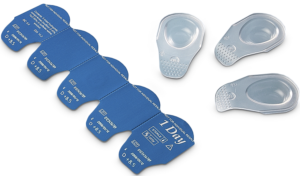The Roman orator Cicero was still more than two millennia away from ultra-light varifocals or daily lenses. To his annoyance, he had to have slaves read documents to him because of declining eye-sight. It is true that in ancient times people recognized the magnifying effect of glass spheres, and even Archimedes studied the bundling of light through concave mirrors. But it was not until the 11th century that the Arab mathematician Alhazen became the mastermind of optics, with his work on the functioning of the eye and the refraction of light by means of converging lenses.
Italian monks used this knowledge in the 13th century and cut concave, i.e. bulbous “reading stones”. They were held in front of the eye or used as magnifying glasses. Among clerics and the wealthy, these reading aids quickly became popular with far-sighted and presbyopic people. The starting material was often the silicate mineral beryl – hence the German word “Brille”. Soon, the first somewhat adventurous designs such as forehead band glasses were available to fasten two lenses firmly in front of the eyes which kept the hands free. A milestone in terms of razor-sharp vision was achieved in the 15th century. From that point forward, correction of short-sightedness was achieved through the use of scattering lenses ground to a convex shape.
Thinner, lighter, more precise
The glasses, which became increasingly affordable, provided an infinitely better quality of life, and with their help, more and more people were able to pursue professions that demanded a sharp eye. This formed the basis for the development of sophisticated machines and technological progress.
Nevertheless, visionary creative minds were not satisfied with the steady refinement of corrective lenses and frames. They sought to modify the refractive properties of the eye directly at the cornea. In 1508, Leonardo da Vinci pondered immersing the eye in a waterfilled glass jar – a rather awkward approach. It was not until 1880 that a solution became apparent. His level of suffering may have driven the physician August Müller to research “corneal lenses”. With minus 14 diopters he was extremely short-sighted. His two-centimeter glass lenses showed excellent results in a self-experiment, however the sensitive eyeball tolerated them only under local anesthesia.
The predecessor of our modern plastic contact lenses originated in the 1950s. The hard lenses made of plexiglass only covered the cornea, floated on a tear film and were rarely considered bothersome after the initial phase. In the following decade, the production of soft contact lenses made of other polymers began. They conform to the shape of the cornea, thereby ensuring that they are comfortable to wear and stay in place. This has become the most popular type of lens. These days, improved materials ensure high oxygen permeability for our most important sensory organ and, with proper hygiene, even allow for several days of uninterrupted wear.
Whether the choice is made in favor of extended wear rigid gas permeable (RGP) or disposable lenses – i.e. daily, weekly or monthly lenses – depends besides medical aspects only on the requirements of the wearers: Correction of aberrations of the eye or a purely cosmetic medium, for example to intensify the color of the iris?
The history of the contact lens has not been fully told yet. As a smart product it could offer additional medical value. For example, tear fluid could potentially be used to measure blood sugar. We will see …
Invisible glasses

There are various methods for the manufacture of contact lenses such as molding, lathe or cutting processes. The basis for all lenses is plastic (monomer), which cures to polymers using heat or UV light. In a further step, the products are hydrated by adding saline solution – making them soft and flexible. The manufacture of the contact lenses is followed by safe and sterile packaging into blisters which are printed with all the important data.
Download this article as PDF file
Photos: shutterstock.com/Syda Productions
